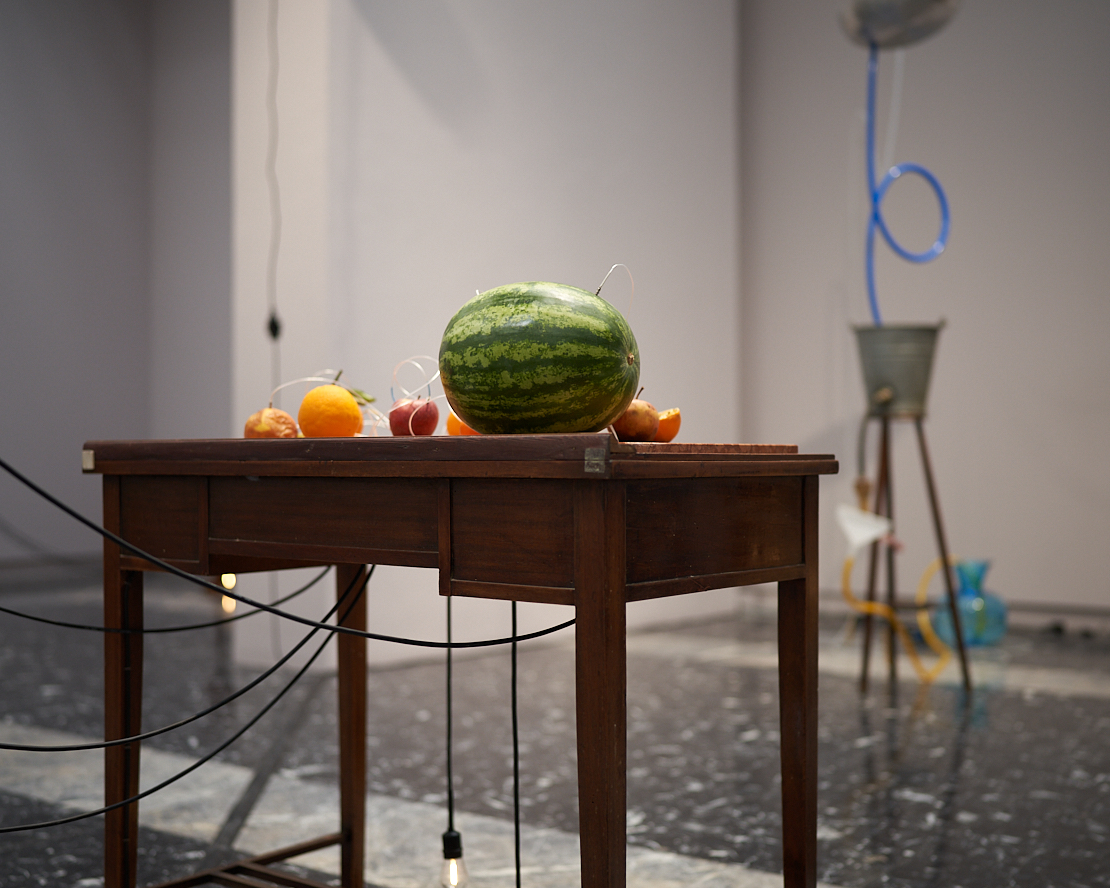Compose: The 60th International Art Exhibition of La Biennale di Venezia
Japan Pavilion at the 60th La Biennale di Venezia
4.20 – 11.24, 2024



Yuko Mohri’s practice is characterized by the transformative nature of ordinary objects and commonsituations. Her installation Moré Moré (Leaky) is originally inspired by various ad hoc efforts(bricolage) seen in Tokyo subway stations to stop water leaks. The service staff often use everydayitems such as plastic bottles, buckets, and hoses to cope with the small “crises,” widespread in thecity with frequent tectonic activities. Mohri artificially creates leaks and then attempts to fix them inthis work, improvising with a variety of common household goods she found at antique furniturestores and flea markets in the vicinity of the Biennale site. Water is diverted into a number of smallpassages and circulated by pumps, changing leaks to contained liquids that builds a large kineticsculpture. The work embraces the open ceiling, the distinctive feature of the Japan Pavilion’sarchitecture, allowing raindrops to enter the space when it rains. We are reminded of the increasingfloods in this precarious time of climate emergency, especially in the context of Venice, a cityconstantly threatened by floods.
Extending from the gallery to the pilotis is Decomposition, a multi-part installation that generatesdrone sounds and flickering lights from the electrodes inserted into fruits that convert their ever-changing moisture into electric signals. Sourced from the local grocers and farmers, the fruits’internal states shift constantly, modulating the pitch of the drone and the intensity of the lights. Asthey ripen and wither, they start giving off the sweet smell of decay and are eventually gathered in thecompost in the pilotis to serve as a source of other plant lives in the Giardini.
Rather than transporting complete artworks from Tokyo to Venice, Mohri turned a whole pavilionspace into her own studio for a few months, gathering most materials from the local shops andmarkets. “Compose” therefore showcases a rare, site-specific presentation that reflects the people ofVenice and their everyday lives.
With a title that etymologically signifies “to place together (com+pose)”, the exhibition asks what itmeans for people to be and work together in a world challenged by division, conflicts, and multipleglobal crises. Mohri observes how crises bring out the greatest creativity in people – this is theprimary idea behind Mohri’s project, initially inspired by the Tokyo subway personnel’s resourcefulmeasures against water leaks. The water leaks are never fully fixed, and the fruits end up in thecompost to rot in Mohri’s installation, but these apparently futile endeavors indicate a glimpse of thehope that our humble creativity might bring about.


